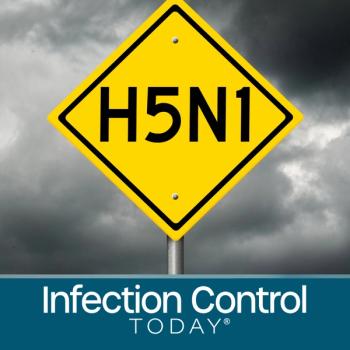
- Infection Control Today, March 2023, (Vol. 27, No. 2)
- Volume 27
- Issue 2
Omicron XBB.1.5: Yet Another COVID-19 Variant to Know
The CDC genomic surveillance found that the XBB.1.5 variant has increased from causing 1% to over 40% in only a month.
This article first appeared on
As of the end of December 2022, the Centers for Disease Control and Prevention (CDC)
Omicron BQ.1.1 and BQ.1, previously the reigning variants, are responsible for 26.9% and 18.3% of new cases, respectively.
XBB.1.5 swept across the country rapidly, making up only 1% of new infections a mere month ago. The subvariant appears to be 5 times more infectious than earlier Omicron strains, which were already 5 times more infectious than the original, wild-type COVID-19 virus.
Recent holiday gatherings, resistance to immune system antibodies, and an improved ability to bind tightly to the body’s ACE-2 receptors all likely contributed to the explosion of XBB.1.5 infections.
Although the World Health Organization (WHO) stated XBB.1.5 has a “growth advantage” above prior subvariants, there is currently no indication it will cause more severe or fatal disease. So far, symptoms of XBB.1.5 are believed to be consistent with earlier Omicron strains.
So far, symptoms of XBB.1.5 are believed to be consistent with earlier Omicron strains.
XBB.1.5 isn’t expected to cause more severe disease than prior COVID-19 variants, but it is still essential to take all available precautions to avoid getting infected. The anticipated surge of XBB.1.5 infections will overburden the health system once again, and as we know, COVID-19 vaccines are less effective at preventing mild disease.
Fortunately, experts are confident
Pfizer’s antiviral,
This story will be updated as we learn more about the XBB.1.5 COVID-19 variant.
Articles in this issue
over 2 years ago
Reaching for the Stars: Turn Your Weaknesses Into Successesalmost 3 years ago
What You Should Know About The Joint Commissionalmost 3 years ago
First Responders Tackle Infection Control and Prevention Challengesalmost 3 years ago
Stop Infections in Their Tracks: Water-Free Care in the ICUalmost 3 years ago
Bug of the Month: Itchy, Itchyalmost 3 years ago
COVID-19, 3 Years Later: What Questions Are Still Unanswered?almost 3 years ago
Making It Easier to Categorize Patients With SABalmost 3 years ago
Focus on 4 Foundations of Patient Safetyalmost 3 years ago
Routine Change of Surgical Gloves/Instruments Significantly Lowers SSIsNewsletter
Stay prepared and protected with Infection Control Today's newsletter, delivering essential updates, best practices, and expert insights for infection preventionists.





